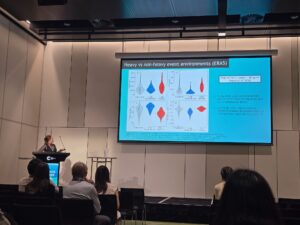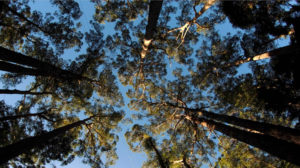

Even in Tasmania’s temperate climate, projections show that extreme heat events will increase under climate change. That’s why it is crucial for Tasmania’s cities to understand and plan for extreme heat and the risk of heat stress for their inhabitants.
Climate Futures PhD student Ben Weeding is undertaking research that will help Hobart plan for a more liveable future as climate change brings more extreme conditions. He recently spoke to ABC News about his work.
Climate projections for Tasmania indicate that, within a few decades, summer will be longer and hotter than what we currently experience. “So for instance, in the 2040 to 2060 period, our Novembers and our Marches will be like what we currently experience in February,” Ben says. By 2040-2060 the number of hours in which people would be at risk of heat stress will be roughly double the number of hours in which we experience heat stress currently.
Ben’s research is therefore looking at ways for cities to stay cool during future heat. He is doing this by mapping out different surfaces in the city of Hobart and connecting these to heat conditions.
“We’ve got some little sensor rigs that we have built. They are measuring temperature, wind speed, relative humidity and radiation to help us understand the different surfaces of a city better. Over the course of a year, what sort of impact does the shade of the tree make?” This kind of small-scale urban microclimate is what Ben’s research is attempting to understand in detail.
Though Tasmania’s climate is heating more slowly than in other parts of the world, the prevailing mild conditions make the population more susceptible to heat. The state has an aging population and a high level of chronic health conditions, so that even moderate temperature rises are projected to have an impact.
“We have a great opportunity here because we have a little bit of time before we start seeing dangerous conditions become common. We need to think now about how we provide shade, windflow and natural cooling resources – rather than just relying on air contitioning.”
Ben says that the provision of public green spaces is important. “More green spaces and more street trees definitely results in a cooler city – but only once you make that consistent throughout the city.”
“Cities around the world are getting on board with these ideas to help them better cope with climate change,” says Ben, and Tasmania’s cities can do this too.








